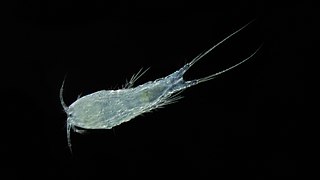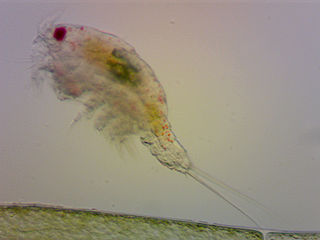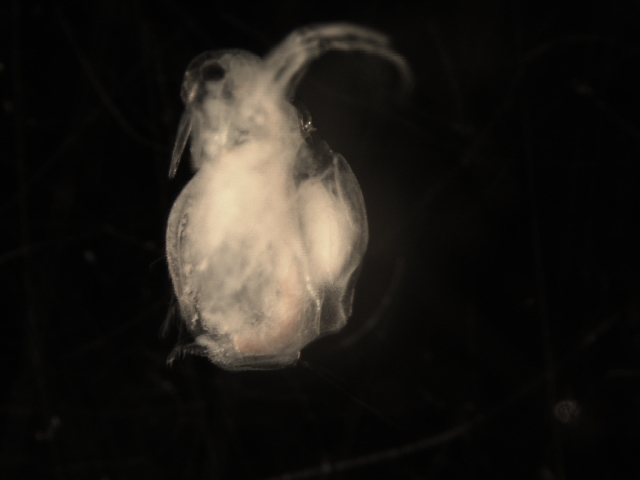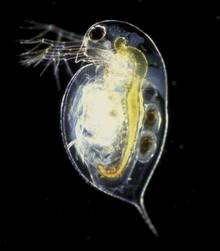
Daphnia is a genus of small planktonic crustaceans, 0.2–6.0 mm (0.01–0.24 in) in length. Daphnia are members of the order Cladocera, and are one of the several small aquatic crustaceans commonly called water fleas because their saltatory (Wiktionary) swimming style resembles the movements of fleas. Daphnia spp. live in various aquatic environments ranging from acidic swamps to freshwater lakes and ponds.
This is a timeline of the history of piracy.

Cyclops is one of the most common genera of freshwater copepods, comprising over 400 species. Together with other similar-sized non-copepod fresh-water crustaceans, especially cladocera, they are commonly called water fleas. The name Cyclops comes from the Cyclops of Greek mythology which shares the quality of having a single large eye, which may be either red or black in Cyclops.

Canthocamptus is a genus of copepods that live in water from the Arctic Ocean to the Atlantic Ocean. There are over 200 different species of Canthocamptus. A number of Australian endemic species are listed as vulnerable species on the IUCN Red List, and one Brazilian species is conservation dependent.

Attheyella is a genus of copepods in the family Canthocamptidae, containing the following species:

Moina is a genus of crustaceans within the family Moinidae. The genus was first described by W. Baird in 1850. They are referred to as water fleas, but are related to the much larger Daphnia magna and the larger Daphnia pulex. This genus demonstrates the ability to survive in waters containing low oxygen levels, high salinity, and other impurities, including salt pans, and commonly eutrophication. An example of such an extreme habitat is the highly saline Makgadikgadi Pans of Botswana, which supports prolific numbers of Moina belli.





